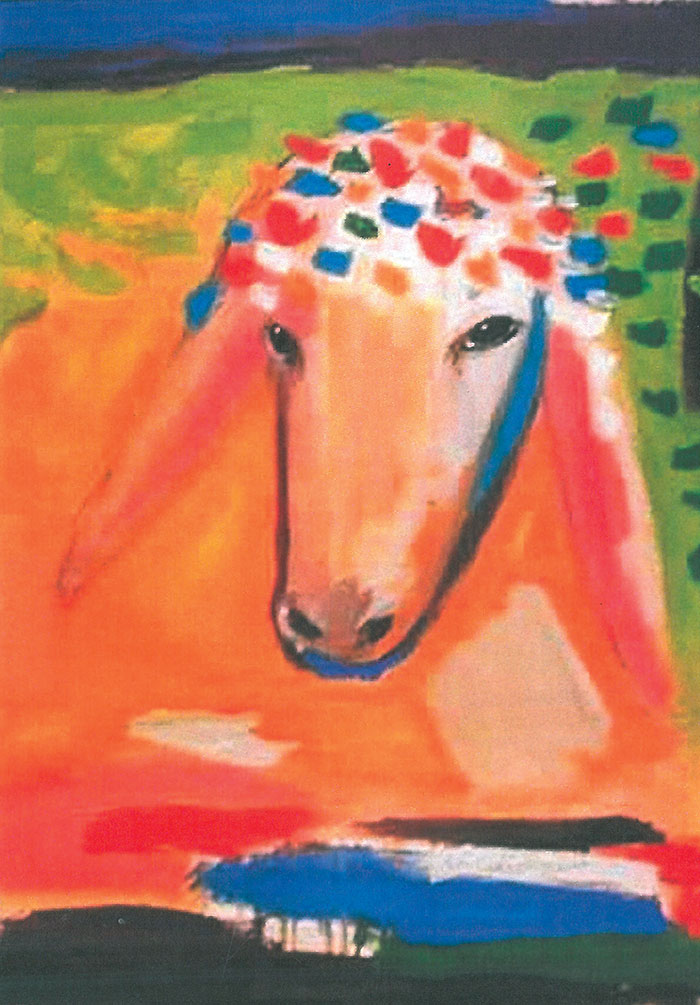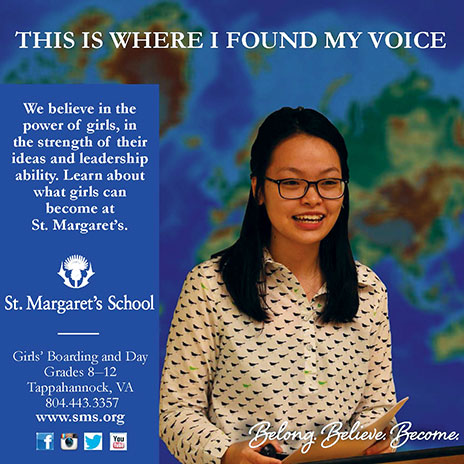Those Unlikely Foreign Service Friendships
Reflections
BY DOROTHY CAMILLE SHEA

One of Menashe Kadishman’s iconic lamb paintings.
Courtesy of Manashe Kadishman’s Family
There’s a moment when you think: I am so fortunate to know this person. That thought is followed by the realization: I never would have met him or her, let alone become friends, if it weren’t for the Foreign Service, if our lives hadn’t collided when I was posted to (fill in the place).
We’ve all had those moments, right? It’s one of the things I love about the Foreign Service. Here is the story of one such friendship between a diplomat and an artist who became friends by chance.
It was just like in the movies. In a busy restaurant, I did something I’ve never done before or since: I asked the waitress what his drink of choice was and had one sent over. He smiled and toasted me from across the room.
He could have left it at that. I’m sure lots of admirers had made similar gestures to this world-renowned artist over the years. But he came over and joined our table for dessert, intrigued to meet a U.S. diplomat. He invited me to his studio, and so began a wonderful, if unlikely, friendship.
Menashe Kadishman is one of Israel’s most famous artists. His sculptures and paintings are sprinkled all over the Holy Land, in multiple museums in Europe, in New York’s Museum of Modern Art and the Hirshhorn Museum in D.C.
I first fell in love with his iconic lambs, which seemed to be in all of Israel’s best galleries, when I was working at U.S. Embassy Tel Aviv, supporting the Israeli-Palestinian peace process.
I spent a lot of time in Jerusalem, where talks typically took place, serving as notetaker for a newly appointed special envoy who spent his days talking to Israeli and Palestinian leaders, sometimes bringing them together.
After each day of meetings, I would bang out the day’s cables before trudging back to the King David Hotel. On my way back to the hotel each night, I would stop and look in the window of the adjoining gallery, which showcased the most beguiling paintings of lambs.
These colorful, abstract creatures told a story with their dewy eyes, but I had no idea what it was. I decided to investigate.

Shea poses with the artist.
I read up on Menashe Kadishman. He’d spent his formative years on a kibbutz as a shepherd, and shepherding became a recurring theme in his work. For an installation at the 1978 Venice Biennale, he famously donned white linen garb, carried a staff and surrounded himself with live sheep.
Later, when his son turned 18 and faced compulsory military service, Menashe was inspired by the Biblical story of Abraham being called upon to sacrifice his son—later a sheep, thanks to God’s mercy. That helped explain the dewy eyes of those lambs! Thousands of sheep paintings now serve as the legacy of his attachment to the metaphor.
Menashe and I stayed in touch for a while after my tour ended, but he didn’t do email or Facebook, and we eventually fell out of touch. In the summer of 2014, though, I returned to the Holy Land—this time to Jerusalem.
One of the first things I did was look up Menashe. We picked up right where we left off. He was more frail, but still painting like gangbusters and regaling visitors with funny stories, filling the room with warmth.
Menashe was 82 years old when he died. He painted right up until the end, and as testament to his generosity, he gave prints of his work to the hospital workers who tended to him during his final days. I was blessed to have befriended this great man. I hold dear our unique and unlikely Foreign Service friendship.


